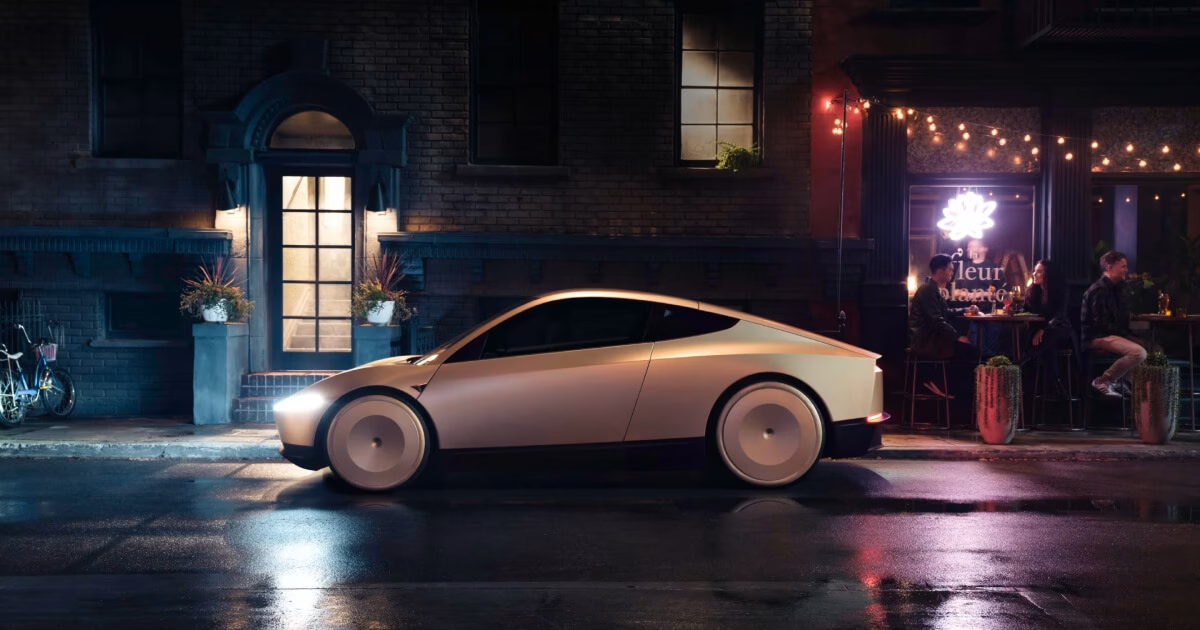When Elon Musk first unveiled Tesla’s bold vision of a fully autonomous robotaxi fleet, he painted a future where car ownership would be optional, ride-hailing would cost pennies, and Tesla owners could earn passive income by letting their cars drive for others. Nearly a decade later, on June 22, 2025, Tesla finally launched its long-promised Robotaxi service in Austin, Texas.
But is this the transportation revolution Musk promised—or just another overhyped milestone? Let’s take a closer look.
What Exactly Is Tesla’s Robotaxi?
Tesla’s Robotaxi is an autonomous ride-hailing service powered by its Full Self-Driving (FSD) software. The initial fleet in Austin consists of 10–20 Tesla Model Y vehicles operating in a geofenced area of South Austin.
- Operating Hours: 6:00 AM – 12:00 AM
- Promotional Fare: $4.20 per ride (a typical Musk-style joke reference)
- Human Safety Monitor: Tesla employees sit in the front passenger seat to observe and intervene if needed
In the long term, Tesla plans to integrate not just Model 3 and Model Y but also a purpose-built Cybercab and a Robovan, vehicles with no steering wheels or pedals, designed for full autonomy.
A History of Big Promises
Musk’s self-driving deadlines have become almost legendary for their inaccuracy. Consider a few highlights:
- 2015–2016: Musk predicted “complete autonomy” within two years.
- 2016: Claimed Tesla would demo a fully autonomous trip from LA to New York by 2017.
- 2019: Promised 1 million robotaxis on the road by 2020.
- 2022: Claimed he’d be “shocked” if FSD wasn’t safer than humans by year’s end.
Seven years later, the Austin launch still requires human safety monitors—showing just how far reality lags behind the rhetoric.
The Launch in Austin: Mixed Reception
The June 2025 launch drew intense media coverage and polarized reactions.
The Praise
- Early riders described the rides as “smooth” and “futuristic”.
- Investors and Tesla fans hailed it as the start of a new era.
- Tesla’s stock jumped by 8% after the launch announcement.
The Problems
But cracks quickly appeared:
- Traffic Law Violations: Robotaxis were seen driving the wrong way in intersections, swerving across double yellow lines, and speeding.
- Erratic Behavior: Steering wheel jerking, phantom braking (especially near police cars), and poor lane discipline.
- Pick-Up Issues: One vehicle even stopped in a handicapped parking space to pick up a passenger.
Videos of these incidents circulated widely on social media, prompting the U.S. National Highway Traffic Safety Administration (NHTSA) to open an investigation just one day after launch.
Safety and Regulatory Challenges
Tesla insists its camera-based “vision-only” system is superior to rivals’ lidar + radar approaches, arguing that humans drive with eyes, not lasers. Critics disagree, pointing out that lidar provides essential redundancy and reliability, especially in poor weather.
- Tesla’s Autonomy Level: With human monitors in the front seat, Tesla’s service is at best Level 2–3 autonomy.
- Competitors: Waymo (Alphabet’s self-driving unit) operates true Level 4 driverless taxis in Phoenix, San Francisco, Los Angeles, and Austin—with 250,000 weekly rides and no safety drivers. Baidu and Pony.ai in China have also scaled to tens of thousands of rides per week without safety drivers.
Tesla, in contrast, is still taking baby steps.
Investor Hype vs. Reality
Much of Tesla’s current market valuation rests not on its EV sales, but on the promise of autonomy.
- ARK Invest (Cathie Wood): Predicts robotaxis could make up 90% of Tesla’s profits by 2029, projecting trillions in valuation.
- RBC Capital: Values robotaxis and FSD at over $815 billion of Tesla’s worth.
- Skeptics: Point out Tesla would need to deliver over 230 billion rides per year (23,000× the current industry total) to meet such expectations.
Meanwhile, Tesla’s net margins are shrinking, and rivals like BYD, Waymo, and Zoox are moving steadily forward with proven, safer tech.
The Bigger Question: Why Is Full Autonomy So Hard?
AI-driven cars face a gauntlet of real-world challenges:
- Unpredictable Traffic: Human drivers can adapt quickly to chaos—AI often struggles.
- Weather: Rain, fog, and glare can confuse Tesla’s vision-only system.
- Ethics & Liability: If a robotaxi causes an accident, who’s legally responsible? Tesla? The car owner? The software engineer?
Until these issues are solved, autonomy remains experimental rather than transformative.
Tesla’s Future Plans
Musk’s roadmap includes:
- Expansion to 12 U.S. cities by late 2025 (pending regulators).
- Cybercab mass production in 2026–27.
- Eventual removal of safety monitors and full Level 4/5 autonomy.
But given Tesla’s track record of missed deadlines, these goals should be taken with skepticism.
Final Verdict: Game Changer or Just Hype?
Tesla’s Robotaxi launch is important, but it is not the revolution Musk promised.
What It Is: A limited pilot in one city with safety monitors and frequent mistakes.
What It Isn’t: A fully autonomous, scalable, safe ride-hailing network.
For now, Tesla’s robotaxi remains more hype than game changer—a flashy beta test rather than a transportation revolution. But if Tesla can overcome its technical, safety, and regulatory hurdles, the potential rewards are enormous.
Until then, Waymo, Zoox, and Baidu appear closer to making autonomy mainstream, while Tesla continues to chase its ever-moving deadlines.



